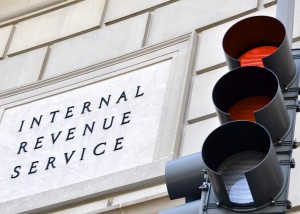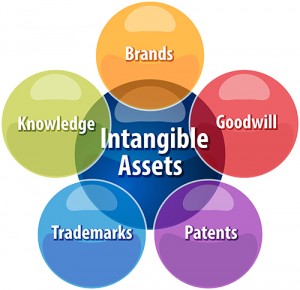As I grow older, I am reminded of the Steve Miller song, Fly Like An Eagle where he sings “time keeps on slipping, slipping, slipping into the future…”. This blog covers some important age-related tax milestones that I witness every tax season and that you should keep in mind as you get older.
Ages 0–23
The so-called “Kiddie Tax” rules can potentially apply to your child’s (or grandchild’s) investment income until the year he or she reaches age 24. Specifically, a child’s investment income in excess of the applicable annual threshold is taxed at the parent’s marginal tax rate.
Note: For 2018 and 2019, the unfavorable income tax rates for trusts and estates were used to calculate the Kiddie Tax. Recent legislation changed this for 2020 by once again linking the child’s tax rate to the parent’s marginal tax rate. However, you may elect to apply this change to your 2018 and 2019 tax years. If we feel an election would be beneficial for 2018, we may recommend amending your return.
For 2020 and 2021, the investment income threshold is $2,200. A child’s investment income below the threshold is usually taxed at benign rates (typically 0% for long-term capital gains and dividends and 0%, 10%, or 12% for ordinary investment income and short-term gains). Note that between ages 19 and 23, the Kiddie Tax is only an issue if the child is a full-time student. For the year the child turns age 24 and for all subsequent years, the Kiddie Tax ceases to be an issue.
Age 18 or 21
A custodial account set up for a minor child comes under the child’s control when he or she reaches the age of majority under applicable state law which is 21 in Pennsylvania. If there’s a significant amount of money in the custodial account, this issue can be a big deal. Depending on the child’s maturity level and dependability, you may or may not want to take steps to ensure that the money in the custodial account is used for expenditures you approve of such as college tuition.
Age 30
If you set up a Coverdell Education Savings Account (CESA) for a child (or grandchild), it must be liquidated within 30 days after he or she turns 30 years old. To the extent earnings included in a distribution are not used for qualified higher education expenses, they are subject to federal income tax plus a 10% penalty tax. Alternatively, the CESA account balance can be rolled over tax-free into another CESA set up for a younger family member.
Age 50
If you are age 50 or older as of the end of the year, you can make an additional catch-up contribution to your Section 401(k) plan (up to $6,500 for 2020), Section 403(b) plan (up to $6,500 for 2020), Section 457 plan (up to $6,500 for 2020), or SIMPLE-IRA (up to $3,000 for 2020), assuming the plan permits catch-up contributions. You also can make an additional catch-up contribution (up to $1,000 for 2019 or 2020) to your traditional or Roth IRA. The deadline for making IRA catch-up contributions for the 2019 tax year is 4/15/20.
Age 55
If you permanently leave your job for any reason, you can receive distributions from the former employer’s qualified retirement plan without being socked with the 10% early distribution penalty tax. This is an exception to the general rule that the taxable portion of qualified retirement plan distributions received before age 59½ are subject to the 10% penalty tax. Note that this exception applies only if you have attained age 55 on or before your separation from service.
Age 59½
You can receive distributions from all types of tax-favored retirement plans and accounts including IRAs, Section 401k accounts, pensions and tax-deferred annuities without being hit with the 10% early distribution penalty tax. Before age 59½, the penalty tax will apply to the taxable portion of distributions unless an exception is available.
Age 62
You can choose to start receiving Social Security retirement benefits. However, your benefits will be lower than if you wait until reaching full retirement age, which is age 66 for those born between 1943 and 1954. Also, if you work before reaching full retirement age and your earnings exceed $18,950, your 2021 Social Security retirement benefits will be further reduced.
Age 66
You can start receiving full Social Security retirement benefits at age 66 if you were born between 1943–1954. You will not lose any benefits if you work in years after the year you reach the full retirement age of 66, regardless of how much income you have in those years. However, if you will reach age 66 in 2021, your benefits may be reduced if your income from working exceeds $50,520.
Note: If you were born after 1954, your full retirement age goes up by two months for each year before leveling out at age 67 for those born in 1960 or later.
Warning: Under current law, up to 85% of your Social Security benefits may be subject to federal income tax, depending on your provisional income level. Provisional income equals your gross income from other sources plus tax-exempt interest income and 50% of your Social Security benefits. Contact us if you have questions or want more information.
Age 70
You can choose to postpone receiving Social Security retirement benefits until you reach age 70. If you make this choice, your benefits will be higher than if you start earlier.
An often-overlooked issue that you must factor into the breakeven age is when you would come out ahead by postponing benefits. For example, if your normal retirement age is 66 and you wait until age 70 to begin receiving benefits, you forego benefits for four years. It would take 12½ years to reach the breakeven point. Are you sure you will still be around and able to enjoy the higher benefit at age 82½? Fortunately, I can prepare a report to help you decide when to take social security based on your current earnings, other retirement income and your health.
Age 72
At this age, you must begin taking annual Required Minimum Distributions (RMDs) from tax-favored retirement accounts such as traditional IRAs, SIMPLE IRAs, SEP accounts, or 401k accounts and pay the resulting income taxes. However, you do not need to take any RMDs from Roth IRAs set up in your name. The initial RMD is for the year you turn 72 if you had not reached age 70½ by December 31, 2019. You can postpone taking the initial RMD until April 1 of the year after you reach the magic age. If you choose that option, however, you must take two RMDs in that same year: one by the April 1 deadline (the RMD for the previous year) plus another by December 31 (the RMD for the current year). For each subsequent year, you must take another RMD by December 31. There’s one more exception: If you are still working after reaching age of 72, and you do not own over 5% of the employer, you can postpone taking any RMDs from the employer’s plan until after you have actually retired.
Thanks to a change included in the Setting Every Community Up for Retirement Enhancement Act (the SECURE Act), the age after which you must begin taking RMDs is increased from 70½ to 72. This favorable change only applies to individuals who attain age 70½ after December 31, 2019. So, if you turned 70½ in 2019 or earlier, you are unaffected. If you turn 70½ in 2020 or later, you will not need to begin taking RMDs until after attaining age 72.
Conclusion
Remember that almost all adults should do at least some estate planning. In uncomplicated situations, nothing more than a simple will and updated beneficiary designations may be required. If you have a larger estate, taking steps to confront realities about your heirs and to reduce exposure to the federal estate tax and income tax and any Pennsylvania inheritance tax may be advisable. Please call Gregory J. Spadea at 610-521-0604, if you think your estate plan needs updating.















